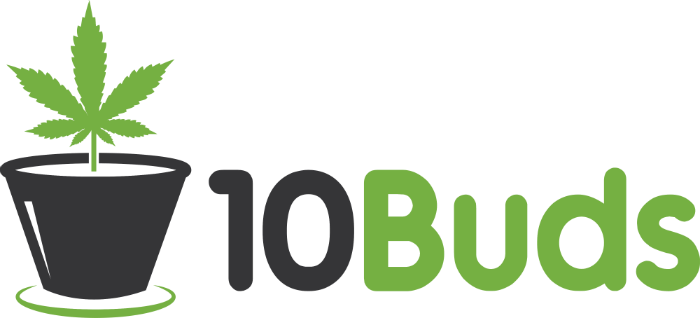Cannabis Decarboxylation
Meet the chemical reaction that gives weed its power.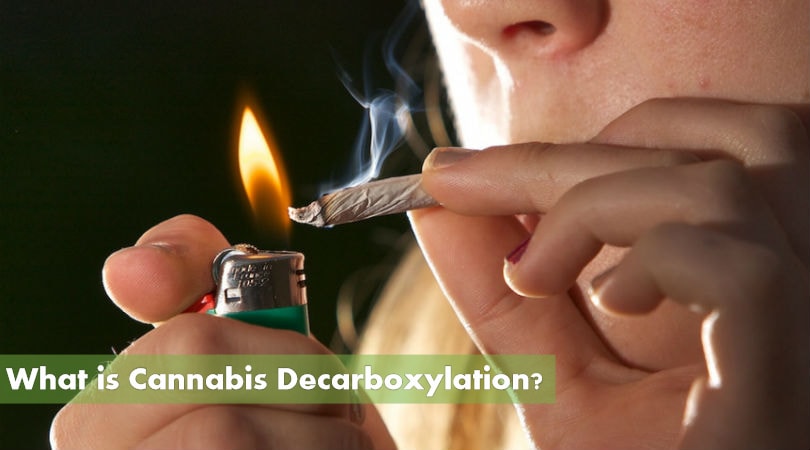 If you’ve ever made your own edibles before, you know better than to grind up raw marijuana leaves and toss them in brownie batter, or even to crumble up dried buds. This would result in a batch of brownies with little to no psychoactive properties. To make brownies that deserve the “special” label, weed must first be heated low and slow in the oven—a process known as decarboxylation.
If you’ve ever made your own edibles before, you know better than to grind up raw marijuana leaves and toss them in brownie batter, or even to crumble up dried buds. This would result in a batch of brownies with little to no psychoactive properties. To make brownies that deserve the “special” label, weed must first be heated low and slow in the oven—a process known as decarboxylation.
Decarbing Cannabis: What’s the Point?
You’ve heard a lot about THC, CBD, and the many other cannabinoids found in marijuana. These impressive molecules have become famous for their many psychoactive and therapeutic effects, but many of those effects would not be possible without decarboxylation.
Early cannabinoids contain something called carboxylic acid in their chemical structure, making them acidic. Here’s why that matters for you: these cannabinoid acids do not bind to CB receptors in the central nervous system, which is why you won’t get high from munching on raw cannabis leaves.
Decarboxylation refers to a process of removing carbon dioxide from a chemical structure. Don’t get thrown off by the scientific words: this process is relatively simple. In cannabis, decarbing releases the carboxyl group COOH from the cannabinoid structures. Pulling out these carboxylic acids results in cannabinoids (like THC and CBD) that can better bind to CB receptors—and thus have more potent effects.
Q: What is decarboxylation?
A: Decarboxylation is the process of removing carbon dioxide from a chemical structure.Q: What is cannabis decarboxylation?
A: Cannabis decarboxylation removes carboxylic acid from cannabinoid acids in marijuana. Prior to decarbing, cannabis contains acidic precursors to the cannabinoids, such as THCA (tetrahydrocannabinolic acid) and CBDA (cannabidiolic acid). Decarbing converts these into THC and CBD, activating their full effects.
How Does Decarboxylation Happen?
Heat and light are the two key ingredients for cannabis decarbing. The decarboxylation process happens naturally while cannabis is stored and fermented, but at a slow rate. Adding a heat source, typically an oven, will speed up that process.
The bud you buy at the store has not been decarbed, so it’s technically non-psychoactive. If you prefer to smoke marijuana in joint or bong form, you have actually been decarbing your weed without even realizing it. That’s because when you light up a joint, the high heat decarbs the weed on the spot, and you can enjoy the full psychoactive effects without preheating your oven.
But if you want to dabble in making your own edibles, decarboxylation is a process that requires a little more planning. If you simply mix your weed with butter, you’re likely going to be disappointed if you’re looking for a high.
Prior to using in edibles, your weed needs to be decarbed first (even if the recipe is a baked good, like a brownie). This is often done in the oven. At temperatures between 225°F and 250°F (and no higher than 300°F), you can decarb your weed in about 40 to 60 minutes. Once it cools, it’s ready to be used as your cannabis-cooking heart desires.
Q: How is cannabis decarbed?
A: Cannabis is decarbed with time or heat. It naturally undergoes the decarboxylation process during storage, but heating it will decarb it faster. This can be done in a heat source like an oven (before use in edibles) or in a joint or bong (while smoking).
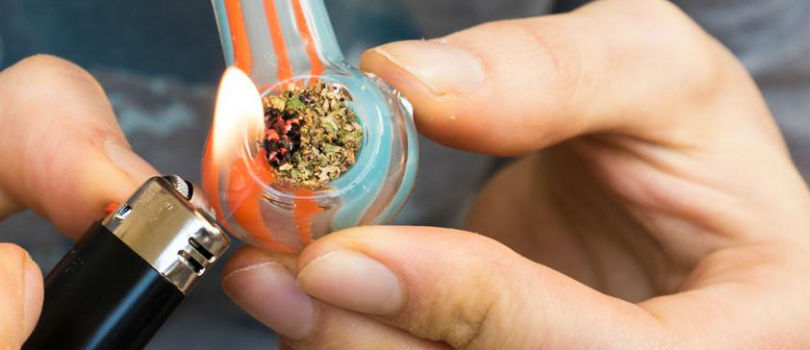
Heat and light are the two key ingredients for cannabis decarbing.
The Life Cycle of a Cannabinoid
When you purchase weed, the label usually only tells you how much THC (and sometimes CBD) you can find in that product. However, that marijuana has gone through many changes before that THC percentage was tested.
All cannabinoids begin as cannabigerolic acid. As the cannabis plant grows and matures, those molecules undergo synthesis and convert into the acidic forms of all the cannabinoids you’re familiar with, such as tetrahydrocannabinolic acid (THCA) and cannabidiolic acid (CBDA).
As for the cannabigerolic acid that started it all, only a tiny percentage of it remains as cannabigerol in most strains of recreational marijuana. The bulk of the cannabigerolic acid made the journey to THCA.
From THCA to THC
Remember: before weed is decarbed, it’s actually non-psychoactive. That’s because the THC is still THCA, or tetrahydrocannabinolic acid. THCA is the acidic precursor of THC.
THCA may not be psychoactive, but it’s not void of value. In vitro studies have found that it has many of the same medical benefits as THC, including fighting inflammation. That said, many people turn to THC for its psychoactive effects, which is where decarboxylation comes in.
When THCA is converted to THC via decarboxylation, the activated cannabinoid is linked to many effects, such as:
• Reduced nausea
• Reduced pain
• Reduced inflammation
• Impaired coordination
• Altered mood
• Altered sense of time and sensations
• Impaired memory
• And stimulated appetite.
Most of these effects wouldn’t happen without decarboxylation. However, if the cannabinoids decarb too much, the THC can convert further to cannabinol (CBN). CBN maintains some of the therapeutic effects of THC, but it is no longer psychoactive.
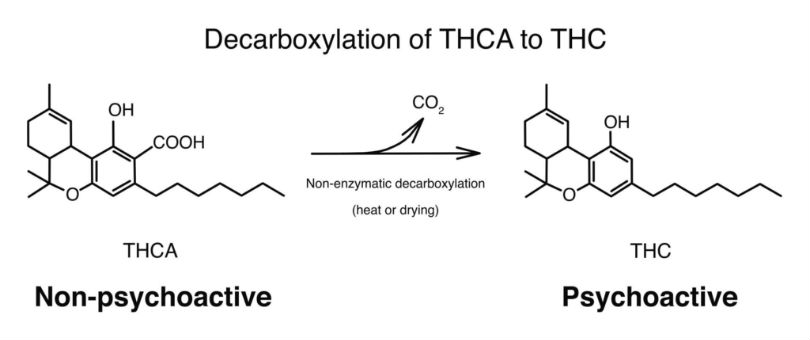
From CBDA to CBD
Since you can’t get the psychoactive effects of cannabis without decarbing THCA, much of the conversation about decarboxylation often revolves around THC. However, THC isn’t the only cannabinoid to undergo decarbing.
CBDA (or cannabidiolic acid) is the acidic precursor to CBD. On its own, CBDA does have pain-reducing and anti-inflammatory effects, according to a 2018 study from Psychopharmacology. However, CBDA does not bind as well to receptors in the body, resulting in less potent effects.
CBD is considered an active—but not psychoactive—cannabinoid. Decarbing this cannabinoid helps it bind to receptors better. This activates its full array of benefits, such as:
• Reduced pain
• Lowered inflammation
• Reduced frequency of seizures
• Lessened anxiety
• And reduced insomnia.
This is true for other active cannabinoids, as well. For example, decarbing helps activate cannabichromene (CBC), cannabidivarin (CBDV), and tetrahydrocannabivarin (THCV). Different strains of cannabis produce a unique ratio of these cannabinoids (and more) that work in synthesis to produce various effects on you.
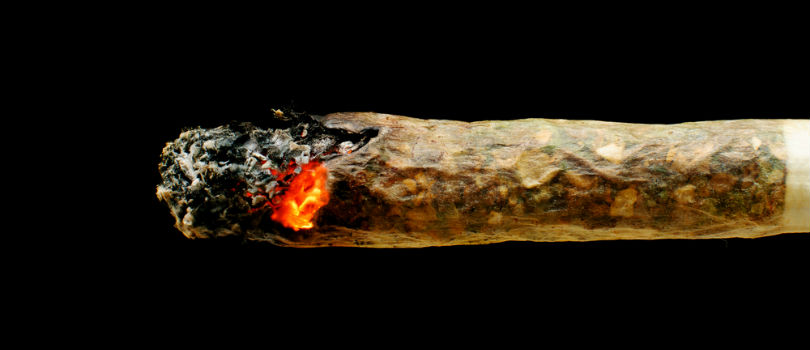
Decarbing CBD helps it bind to receptors better, and activates its full array of benefits.
Decarboxylation: The Final Word
Understanding and appreciating decarboxylation can have many benefits, including helping you save money. Decarbing your own weed to make homemade edibles can be a rewarding and cost-cutting project. The terms may be scientific and multi-syllabic, but the process itself is pretty simple.
Beyond edibles, decarbing cannabis is a vital yet underappreciated process. Decarboxylation is a chemical reaction that you don’t even need to think about while lighting up a joint, yet this process is exactly what makes your bud so enjoyable.
Other FAQ:Q: Can you eat decarbed weed?
A: Yes. In fact, weed needs to be decarbed in order to make edibles with a psychoactive effect. Once decarbed, cannabis can be used in butters, oils, baked goods, sauces, and more.Q: What is the temperature needed to decarb weed?
A: The ideal range for decarbing cannabis is between 225°F and 250°F. Lower temperatures help preserve the flavor. Going above 300°F is likely to damage vital properties of the cannabis and result in an unpleasant taste.Q: How long does decarbing cannabis take?
A: With the oven set to 240°F, decarbing cannabis should take approximately 40 to 60 minutes. Higher temperatures can shorten the decarbing process, but it may result in a less pleasant and potent product.Q: How long does decarbed weed last?
A: Decarbed cannabis can be stored in an airtight glass container in a cool, dark place. It should last at least a year without losing its potency.
